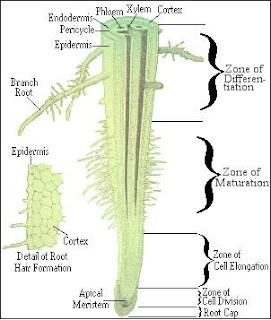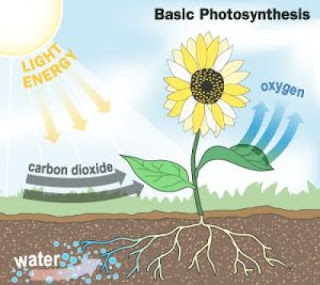Jakarta, Kompas - Kenaikan suhu bumi sebagai dampak perubahan iklim mengancam populasi serangga di kawasan tropis. Perkiraan ilmuwan, menghangatnya suhu bumi pada tahun 2100—naik 5,4 derajat Celsius dari suhu tahun 1990—berisiko buruk bagi banyak spesies serangga.
Kelompok peneliti yang dipimpin Joshua Tewksbury dari Universitas Washington menyebutkan, serangga-serangga tropis lebih sensitif terhadap perubahan suhu dibandingkan dengan serangga yang hidup di kawasan garis lintang lebih tinggi.
Hasil penelitian itu dipublikasikan dalam Proceedings of the National Academy of Sciences edisi Selasa (6/5). Para peneliti Amerika Serikat menganalisis dampak perubahan suhu bumi tahun 1950-2000 terhadap 38 spesies serangga.
”Beberapa spesies serangga dari kawasan tropis dalam data kami sebagian besar rentan terhadap perubahan suhu. Kondisi iklim di tempat mereka berkembang saat ini mendekati ideal dan kenaikan suhu sedikit saja akan serta-merta menyulitkan mereka,” kata Tewksbury, asisten profesor biologi dari Universitas Washington.
Dampak ikutan berkurangnya spesies serangga diyakini memengaruhi penyerbukan tanaman dan ketersediaan pangan.
Peneliti serangga dari Pusat Penelitian Biologi Lembaga Ilmu Pengetahuan Indonesia (LIPI), Djunijanti Peggie, menyebutkan, serangga tergolong rentan terhadap perubahan suhu. Secara fisik, sebagian besar serangga bertubuh lunak tanpa pelindung kulit yang keras.
”Ukuran tubuh atau biomassa kecil menggambarkan kerentanan mereka. Dengan kecenderungan berdarah dingin, serangga-serangga itu sedikit banyak rentan terhadap perubahan suhu sekitar,” kata peraih gelar PhD dari Universitas Cornell, AS, itu.
Menurut peneliti spesialis kupu-kupu itu, iklim tropis seperti di Indonesia saat ini ideal bagi perkembangan berbagai jenis serangga. Berbeda dari serangga di kawasan subtropis, serangga di kawasan tropis berkembang sepanjang tahun karena tipisnya perbedaan suhu antara musim panas dan musim hujan.
”Di kawasan subtropis, sebagian waktu dihabiskan serangga dengan kondisi dorman atau setengah tidur,” katanya. Jumlah jenis kupu-kupu di Indonesia sebanyak 1.600-an menunjukkan kekayaan serangga kawasan tropis.
Tanpa perlindungan
Menurut Tewksbury, ciri khas serangga yang tergolong satwa berdarah dingin adalah sulit bagi mereka untuk menjaga kondisi tubuhnya tetap stabil, misalnya dengan mekanisme berganti bulu atau membentuk mantel pada kulitnya.
”Serangga-serangga itu seperti tidak punya pilihan,” kata Tewksbury.
Menurut perkiraan, mengadaptasi kenaikan suhu bumi, sejumlah jenis serangga akan bermigrasi dan berevolusi dengan iklim yang lebih hangat. Akan tetapi, sebagian yang lain diperkirakan akan mati.
Selain berdampak pada jenis serangga, kenaikan suhu global mengancam lebih dari 20 persen populasi flora dan fauna. Tahun 2100, kenaikan permukaan laut diperkirakan hampir 1 meter, sedangkan jumlah penduduk dunia tahun 2050 sekitar 7,9 miliar jiwa atau estimasi tertingginya 10,9 miliar jiwa (Kompas, 22/4/2006). (AP/BBC/GSA)
Tropical Insect Population Threatened
Jakarta, Kompas - The increase in temperature of the earth as the impact of climate change threaten the population of insects in the tropics. Estimates of scientists, warming the earth's temperature by 2100, rising 5.4 degrees Celsius from the temperature of the 1990's a bad risk for many species of insects.
A group of researchers led by Joshua Tewksbury of the University of Washington says, tropical insects are more sensitive to temperature change compared to insects that live in the area of higher latitudes.
The results were published in the Proceedings of the National Academy of Sciences on Tuesday (6 / 5). U.S. Researchers analyzed the effect of changes in global temperature of 1950-2000 for 38 species of insects.
"Some species of insects from the tropics in our data most susceptible to temperature changes. Climatic conditions in which they developed at this time close to the ideal and the temperature rise just a little will necessarily complicate them, "said Tewksbury, assistant professor of biology at the University of Washington.
Impact of follow-up reduced insect species are believed to affect crop pollination and food availability.
Researchers from the Center for Research Insect Biology Indonesian Institute of Sciences (LIPI), Djunijanti Peggie, said the insects are vulnerable to changes in temperature. Physically, the majority of soft-bodied insects without protective hard skin.
"The size of the body or small biomass illustrate their vulnerability. With cold-blooded trend, the insects were slightly more susceptible to changes in ambient temperature, "said winning his PhD from Cornell University, USA, that.
According to research specialist butterflies, tropical climate like in Indonesia is ideal for the development of various types of insects. Differ from insects in temperate regions, insects in the tropics to grow throughout the year due to thin the difference in temperature between summer and rainy season.
"In temperate regions, most of the time spent with the dormant insects or half asleep," he said. The number of butterfly species in Indonesia's 1,600 shows wealth tropical insects.
Without protection
According to Tewksbury, typical of insects that are categorized as cold-blooded animals is difficult for them to maintain body condition remained stable, for example by changing the mechanism of forming a coat of fur or skin.
"These insects like no choice," said Tewksbury.
According to estimates, adapting the earth's temperature rise, a number of insect species will migrate and evolve with the warmer climate. However, some others are expected to die.
In addition to impacts on insect species, threatening the global temperature rise more than 20 percent of the population of flora and fauna. 2100, sea level rise is expected to nearly 1 meter, while total world population in 2050 about 7.9 billion people or the highest estimate of 10.9 billion people (Kompas, 22/4/2006). (AP / BBC / GSA)




Comments
Post a Comment
Isi Komentar kamu untuk Posting ini!!